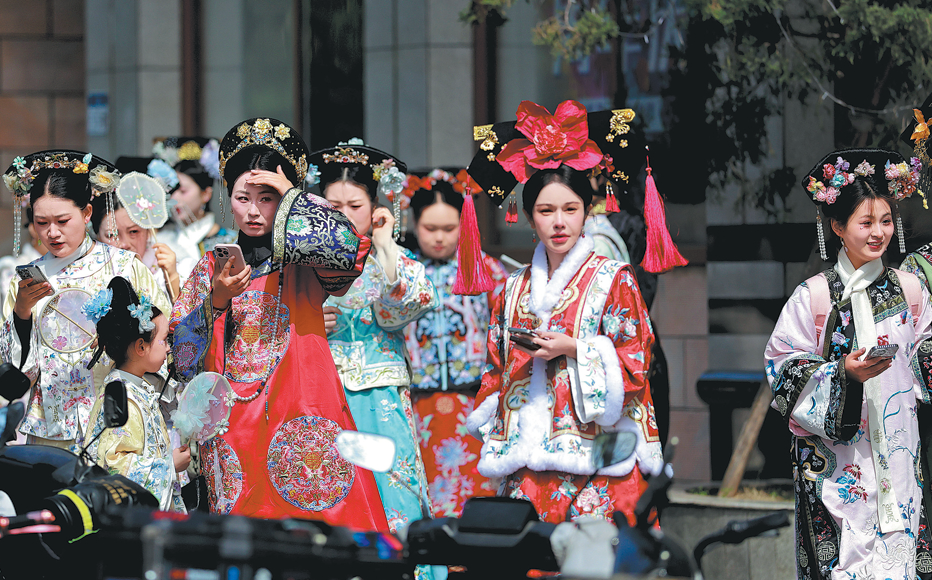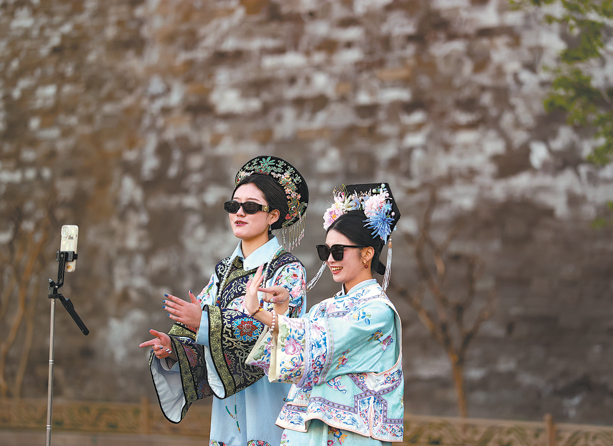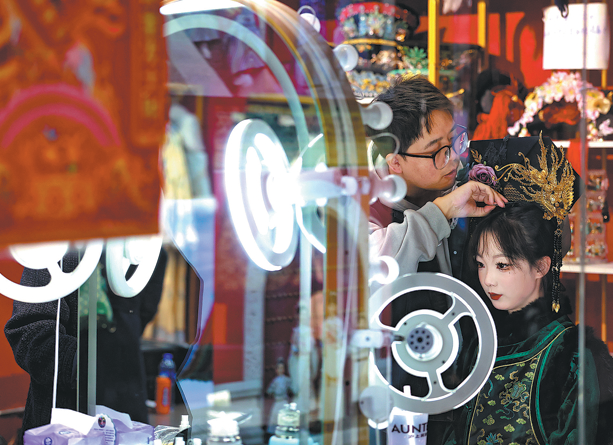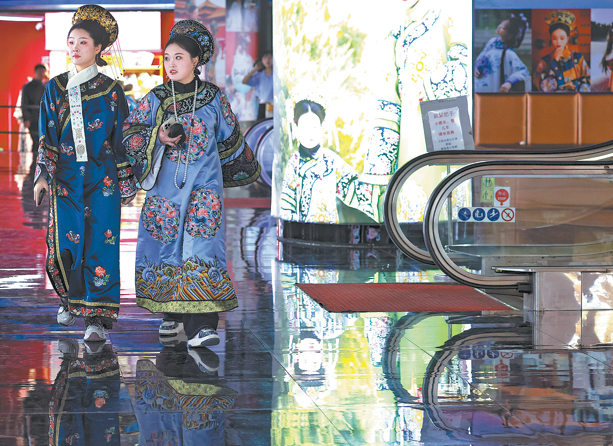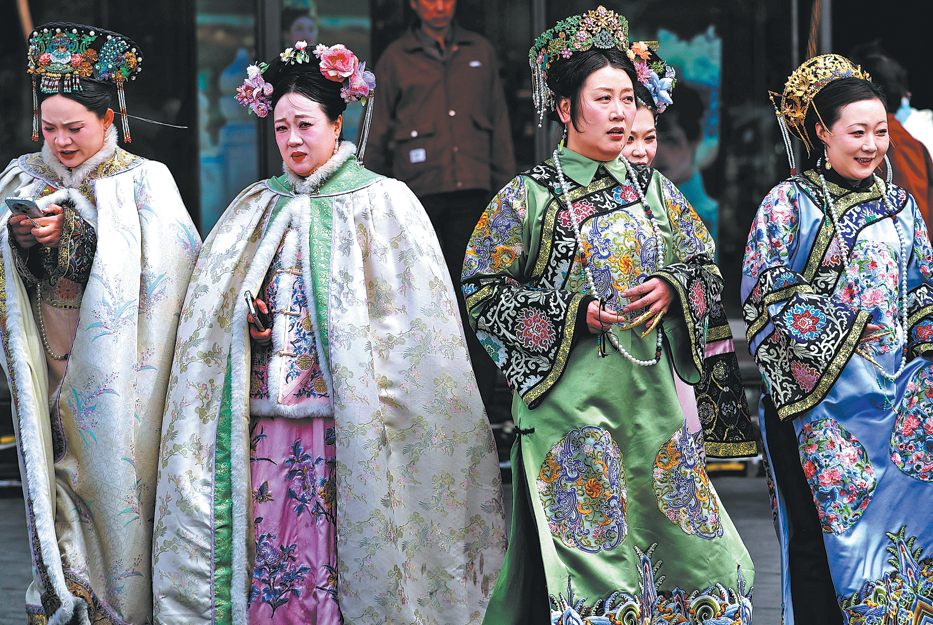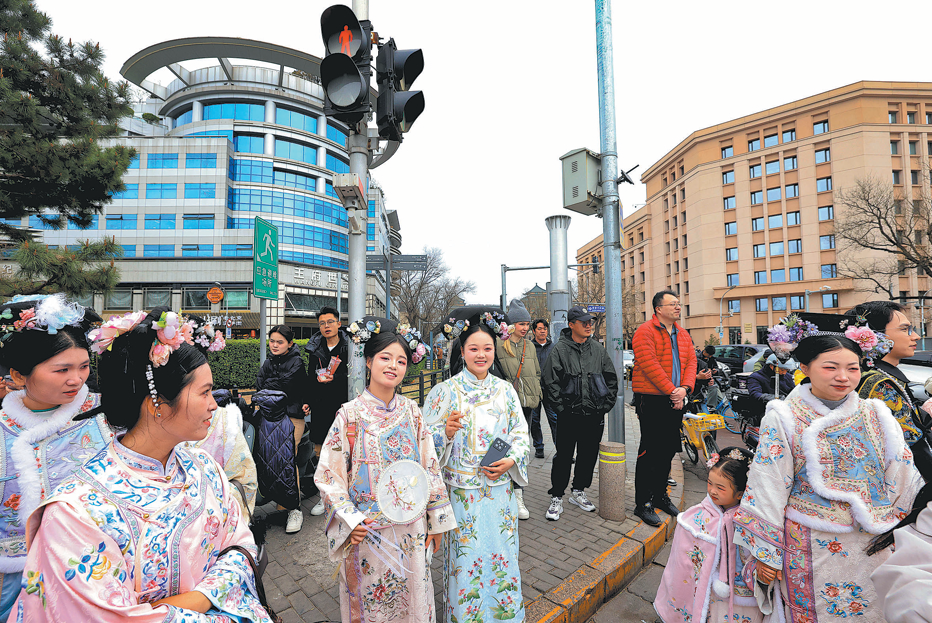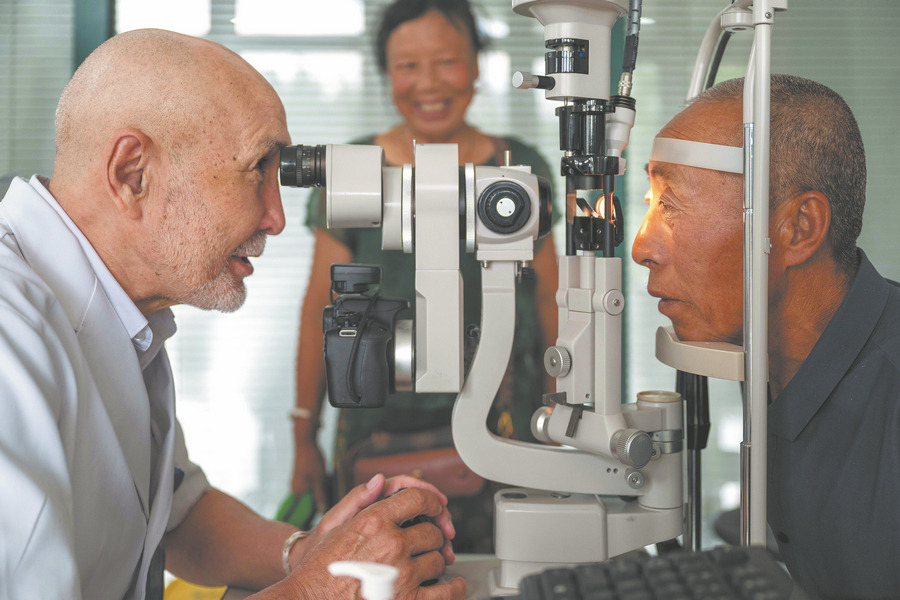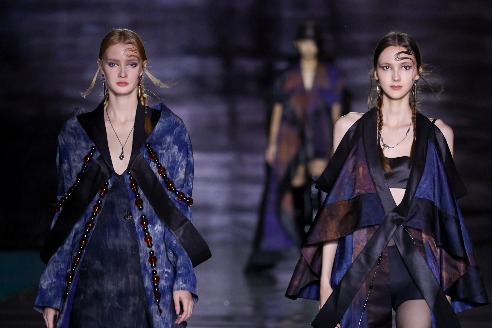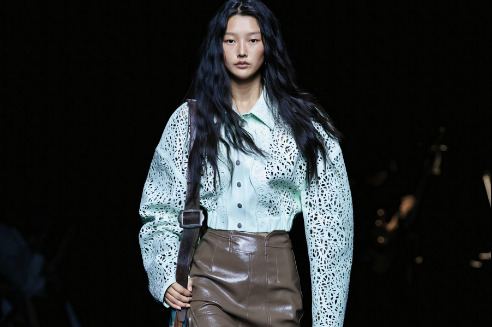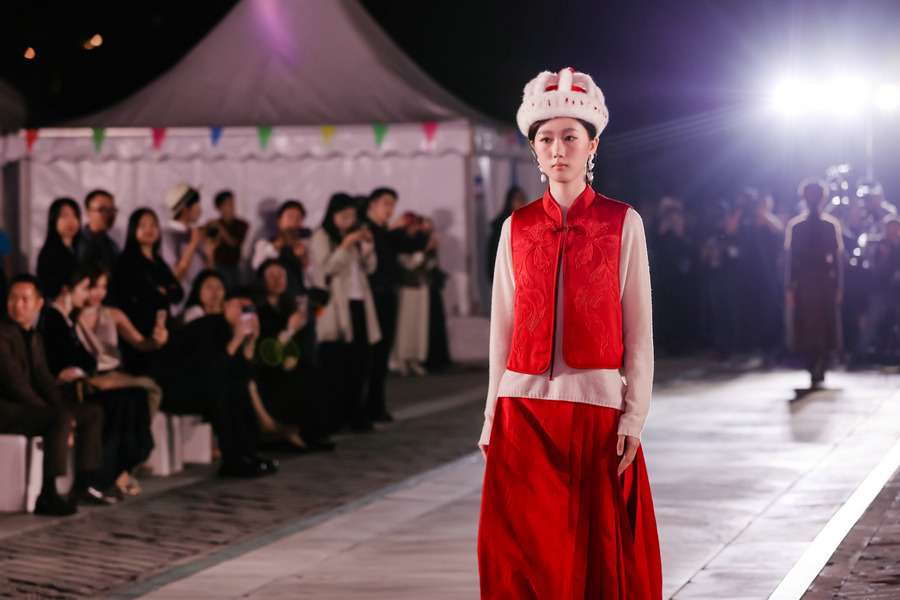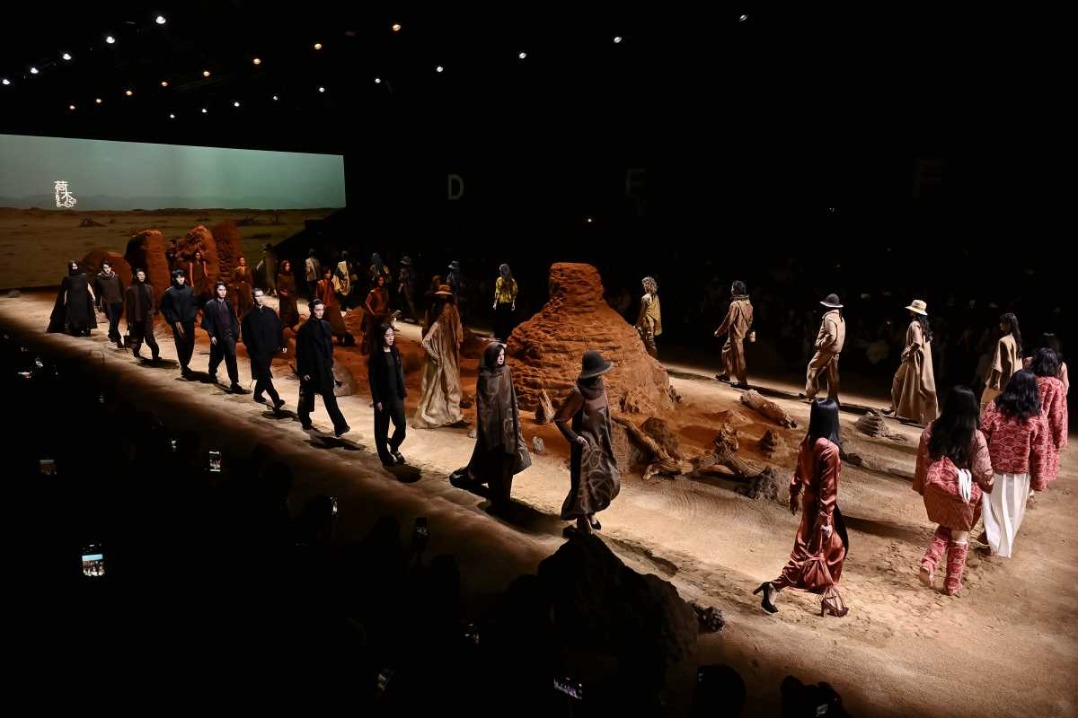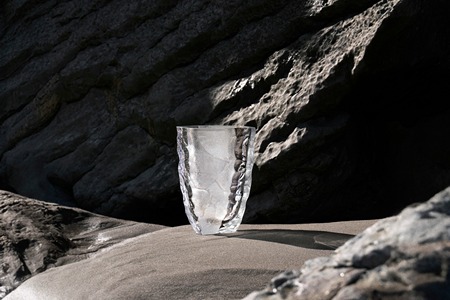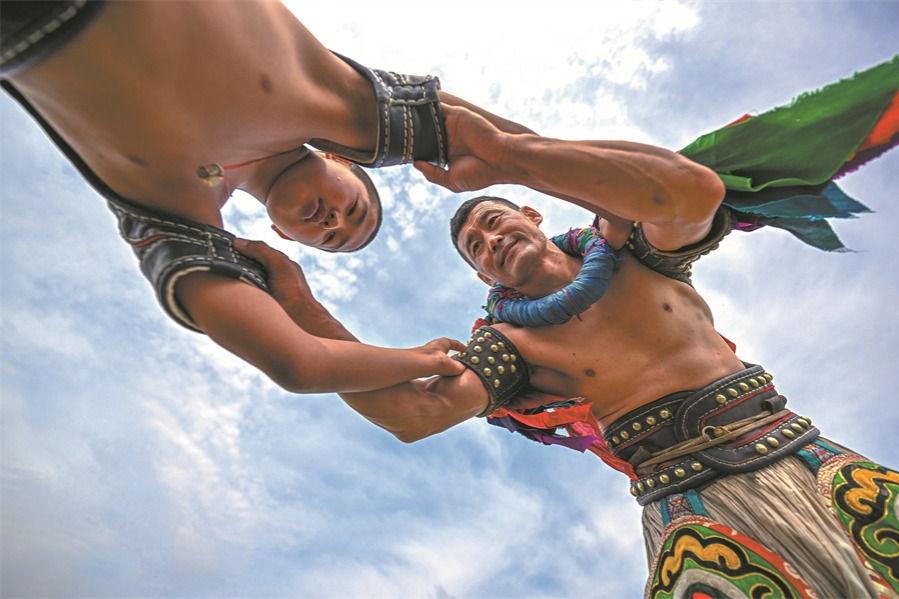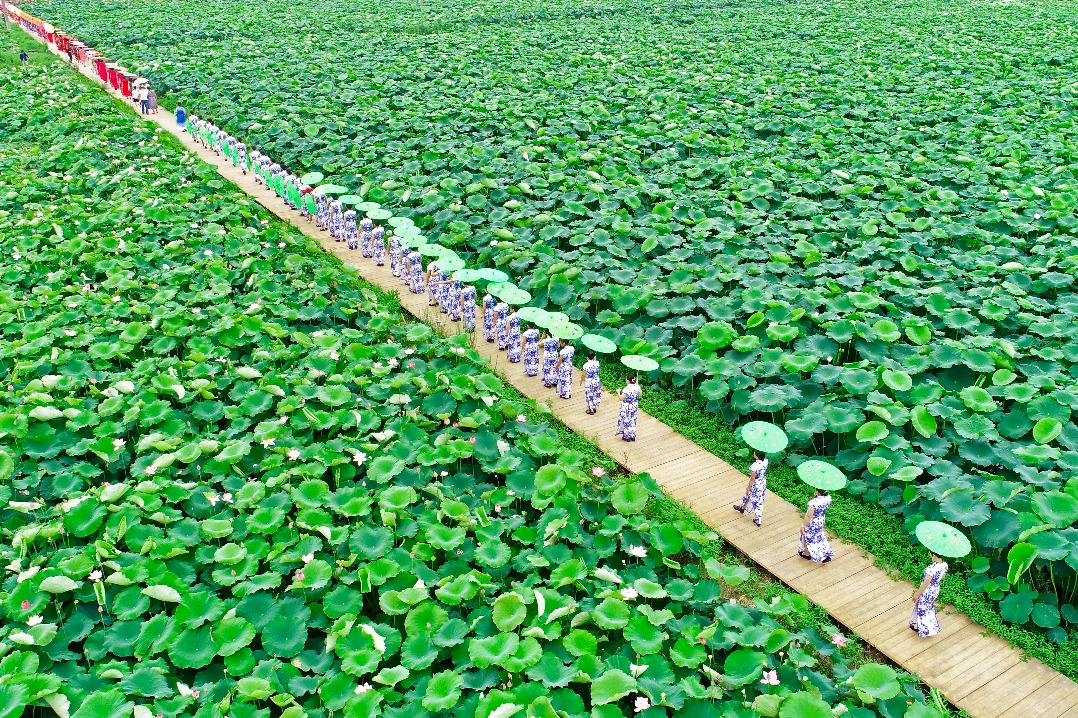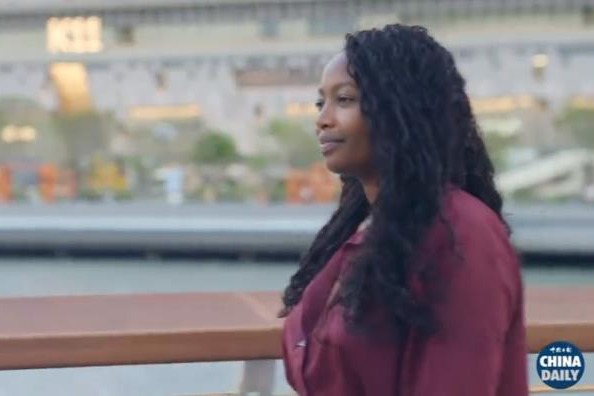'Dream factory' for 'Chinese princesses'
Wangfujing is the place to go for dressing up like a Qing Dynasty gege

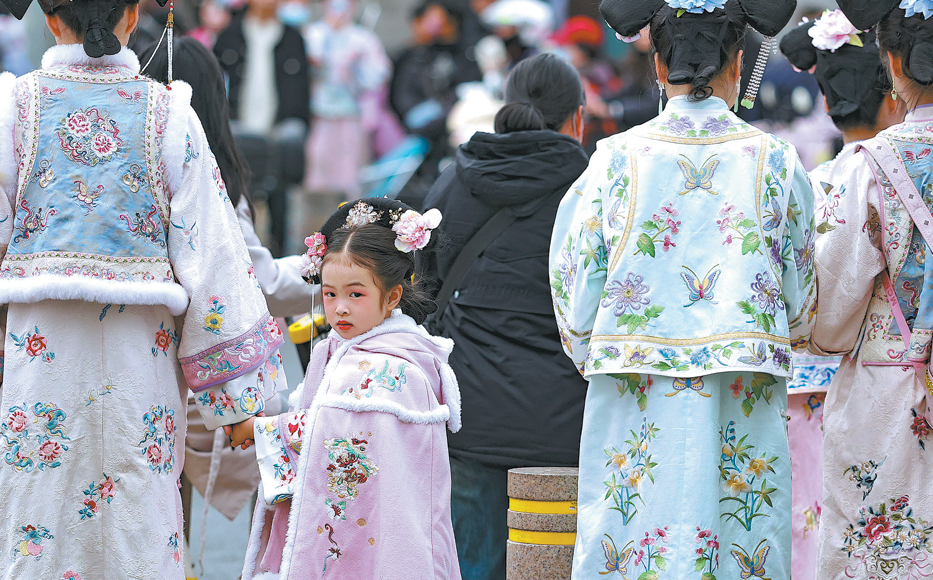
In the early morning, before the opening of the Palace Museum, also known as the Forbidden City, the shutters roll up one by one in the basement of the Wangfu Century Building, about 800 meters from Donghuamen of the Palace Museum. Hundreds of intricately designed traditional costumes and makeup tools in the shops await customers eager to try traditional Chinese styling.
In recent years, the revival of traditional culture, known as Guochao or "Chinachic", has spurred a new trend among young people: immersive experiences in traditional attire. The Wangfu Century Building and its surrounding areas, located in the heart of Wangfujing, a popular business district in China's capital, Beijing, have become a hub for such experiences. Shops there offer visitors a chance to indulge in a fast-paced transformation, especially the styling of gege, princesses of the Qing Dynasty (1644-1911). The dressed-up visitors can walk through Beijing's modern buildings and take photos at various scenic spots, including the Palace Museum.
The area has turned into a "dream factory" for fans of traditional Chinese fashion, providing a new trend to Beijing's cultural tourism.
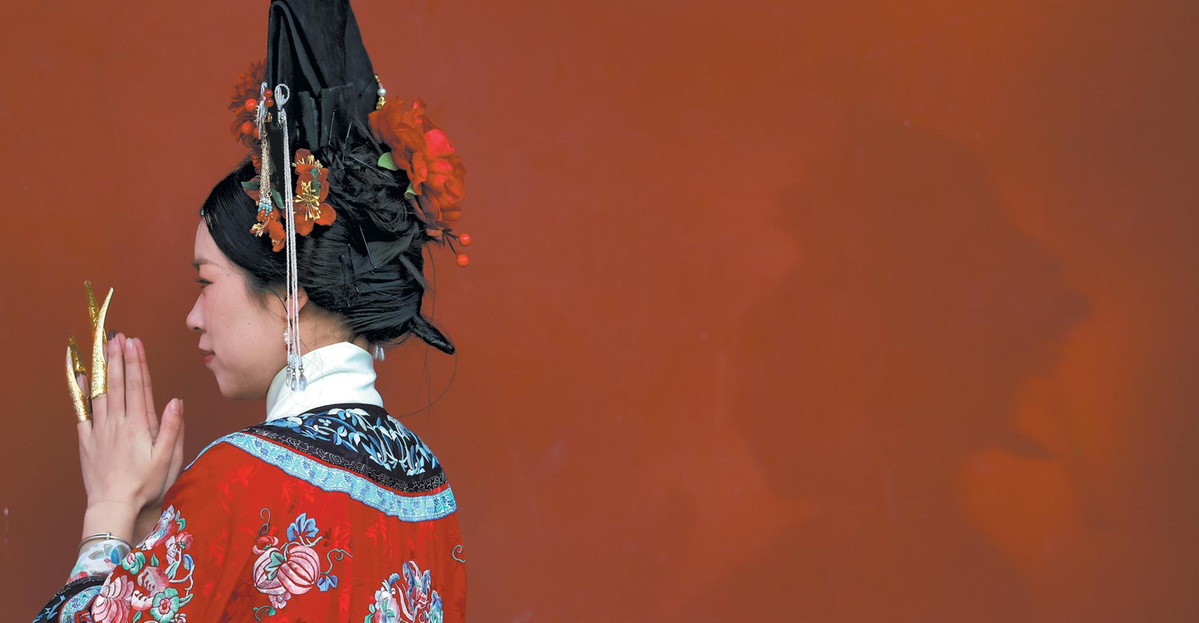
Yu Qian, head of the China Tourist Attractions Association, remarked, "The trend of gege makeup and attire has not only boosted related services, including makeup and photography, but also offered young people an immersive experience of role-playing and cultural identity."
However, many visitors, while sharing photos in traditional garb, have reported issues such as poor service experiences and a lack of transparency in the consumption process. Complaints often focus on areas such as inadequate standardization in makeup procedures, lack of personalized services, shared makeup tools causing skin allergies, poor photography skills, and hidden costs or consumption traps.
Since June 2023, commercial photography has been halted at places such as the Forbidden City. Some commercial photography agencies have shifted to other open tourist sites.
"Tourists are willing to pay for cultural experiences, and tourist sites should provide the necessary knowledge and services," Yu emphasized. By enhancing the design and management of cultural and tourism settings, such experiences can evolve from fleeting fantasies into sustainable urban memories, thereby unlocking the true cultural value behind the gege trend.
